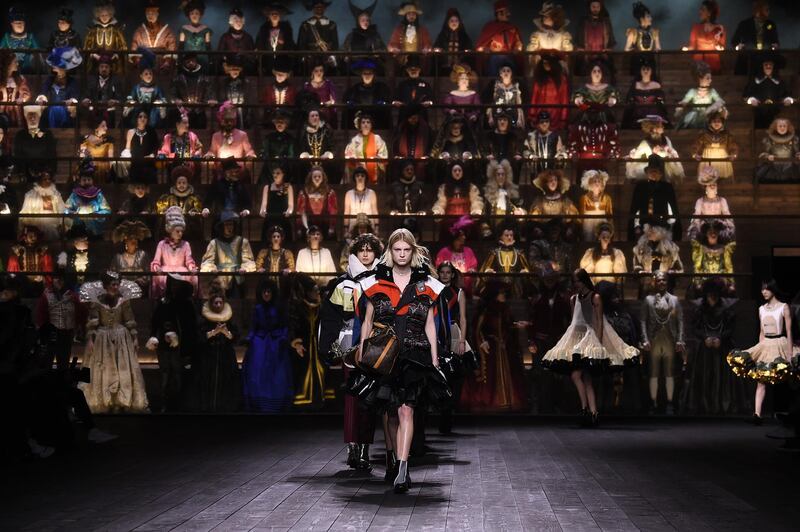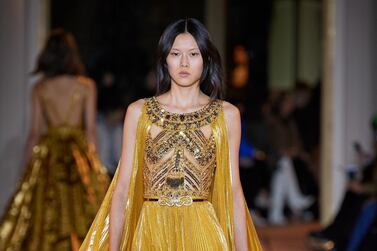As the coronavirus continues its march around the globe, fashion, like many industries, has been battered in its wake.
The menswear shows of June have been cancelled, as has July's haute couture, and even the women’s shows scheduled for September look in doubt. Factories lie idle, orders halted, as clothing made for this season moulders in warehouses, unable to be delivered to stores. Even if it made it to shops, there are no customers to buy it.
Yet even before this pandemic began, there was already much talk about the damaging impact of the fashion industry. With its relentless round of new launches, questions were already being raised over the sustainability of churning out up to 12 collections a year, resulting in hundreds of tonnes of wasted stock and exhausted designers. With its small audience, large expense and even larger carbon footprint, the long-term viability of the fashion show was already under scrutiny, as growing digital connectivity makes it more a throwback desire than a cutting-edge concept.
So, with next season's calendar in shreds due to this enforced pause, is now the moment to re-evaluate what the fashion show means? Is this the time to take a long, hard look at what a show is trying to achieve, and who, exactly, it is aimed at?
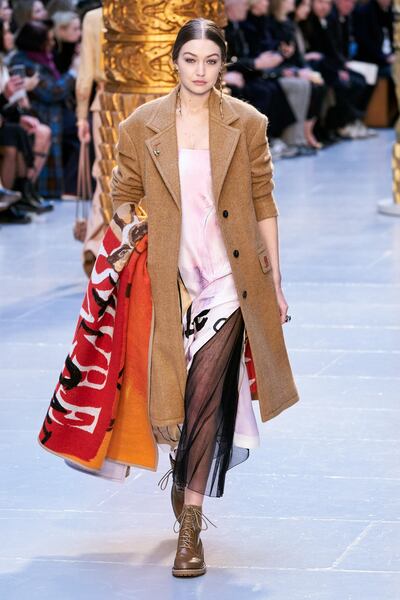
“For us as creatives, the fashion show is about gathering a community, about storytelling, sharing our narrative and being able to convey a message," said Natacha Ramsay-Levi, artistic director of Chloe, at a recent Vogue Global Conversations event.
Beloved of designers, the fashion show is the moment a new collection is unveiled, and where the designer can control exactly how that narrative is played out. With an audience of just a few hundred, the designer gets 15 minutes of everyone’s undivided attention, to tell the story of what the clothes are trying to express. In the wake of Covid-19, is this format now hopelessly out of date?
At the same Vogue event, Balenciaga chief executive Cedric Charbit shared the numbers from the label's fashion shows. While Balenciaga can seat 600 people at each spring / summer or autumn / winter show, that figure is dwarfed by the brand's digital following. Eight thousand people watch via YouTube, 60,000 on Instagram and 300,000 follow via Twitter.
“If you combine this all together with the replays [of the streams], we have an audience of more than 10 million viewers,” explained Charbit. “I think there is a digital reality that is already happening that one needs to embrace and face. Our audience has to be reconsidered. One needs to understand: 'Do we have guests or viewers? Are we in a physical or digital reality?'”
And here is the disconnect of the fashion industry. While the fashion show may be a breathtaking experience to witness, it is not where the house makes its money. Instead, the money end of the deal is the pre-collections – the resorts, cruises and pre-falls of this world.
While seen by many as a small distraction between the main shows (a sartorial amuse-bouche, if you will), the pre-collections are, in fact, where the majority of sales take place. Designers may pour their hearts and souls in the main collections, but department stores and the like are pouring the majority of their budgets into pre-collections.
Seemingly, the romantic beauty of the traditional main-show calendar is out of step with the $2.5 trillion (Dh9.18tn) industry reality.
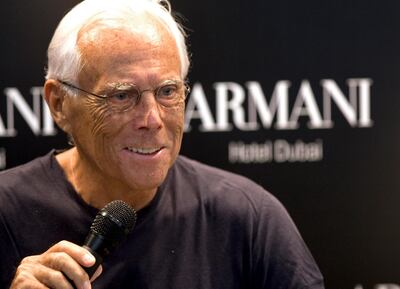
“There is total dichotomy between where we put the creativity and where we put the business,” explained Ramsay-Levi. “The business model of the fashion system has to stop; it has to be rewired totally, because we are losing the creativity. We have to change that, and in this moment we can act, to reinvent the business value of the way this industry is made. I feel it is irresponsible to carry on [the way it has been]."
And Ramsey-Levi is not alone in this view. Designer Marc Jacobs has said something similar, while Giorgio Armani recently penned an open letter declaring that “the decline of the fashion system as we knew it began when luxury adopted fast-fashion methods".
"The top of the range imitated the frenetic pace of endless deliveries, hoping to sell more," the Italian designer wrote.
Seemingly appalled at the relentless pace of the market, Armani continued: "Luxury cannot and must not be rapid. It doesn't make sense for my creations to stay in the shop three weeks before they become obsolete. I don't work like that and I find it immoral."
Yet even as he wrote his impassioned letter, Armani may have already offered a partial solution. In February, as the wider world began to wake up to the threat of Covid-19, the designer took the unprecedented decision of cancelling his normal fashion show at Milan Fashion Week, closing the venue and live-streaming the catwalk instead.
The rest of the industry thought him mad, yet as the virus continued its advance, just a few weeks later Shanghai Fashion Week was forced to reinvent itself as the world's first entirely digital fashion event. With 2.5 million viewers in the opening three hours, it is fair to say that the audience embraced the new format.
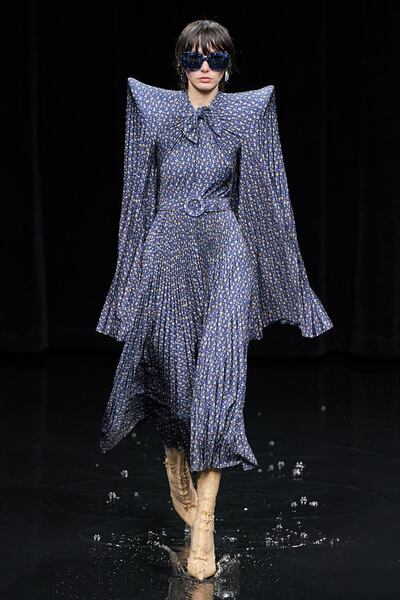
In a recent interview with Forbes, Alison Bringe, chief marketing officer at marketing and data analytics platform Launchmetrics, described fashion shows as "no longer industry events but a platform to reach the digital savvy consumer".
"Brands need to think outside the box in order to transform their 15-minute event into something that lives on, beyond what happens on the runway,” she added, meaning that the old formula is no longer enough. Designers and houses need – must – look beyond the present system and to the audience.
Balmain’s Olivier Rousteing is equally vocal about the possibilities of a digital future. At the VGC event he declared that “it is really important to push digital more than ever".
"There are so many incredible digital artists who can create a digital world and digital can push your dreams to the maximum," said the French designer. "We have to ask what is a fashion show today? We need to give to the audience something different from a normal runway, because there are already so many of those."
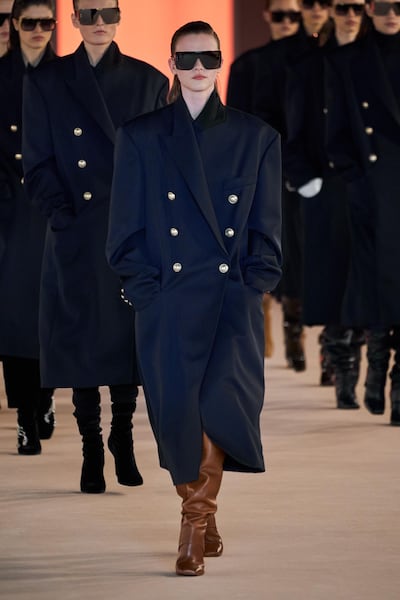
So what are the new possibilities? Digital only? Everything streamed remotely, and clothes CGI-ed on to models as happened at Shanghai? With no firm answers yet, it seems that, moving forward, a fluidity of approach is going to be key.
As Rousteing explained: “Perhaps digital can be the way to present collections in keeping with the fashion system, but real-life shows [can be] saved for showing something else, for the experience. Or mixing men and womenswear? Why not. But I don’t have to do that every season, I can do whatever I want, perhaps take [a show] out into the streets and open the fashion experience to more people."
In this time of deep uncertainty, it is human nature to look at what was, with either deep nostalgia or a yearning to improve. For a topic as complex and emotionally driven as fashion, there may be no single solution to the runway dilemma.
In an industry filled with so many strong characters, it will be surprising if a consensus for a new format is reached, more probable instead that designers will follow the format that best suits them. Some may go digital first, others may cling to the fashion show, while others may shapeshift between the two. But what seems increasingly unlikely is a wholesale return to the old structure, unchanged in any way.
As Ramsay-Levi said: “I think we all agree that we value a fashion show. It’s a moment where you can gather the community; it’s a moment where there is human sensitivity. Of course, the digital is there to amplify, and as Olivier [Rousteing] was saying, maybe it’s the way that we experience the fashion show that needs to change and be more inclusive in a way.”
